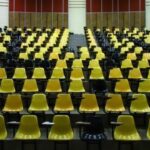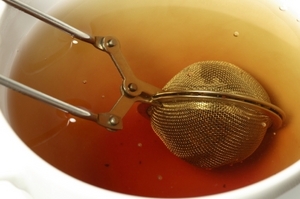My kids are science geeks and for the past 14 years, at least one of the kids in our family have participated in a Science Fair competition. Through our experience, we’ve learned a few tips as to what makes a good science fair presentation. Certainly the experiment itself is part of it, but how the experiment is presented is equally important.
For parents who are new to science fair competitions, your child will be sent home with a handout with the rules of the competition along with instructions for conducting the experiment using the “Scientific Method.” Our school uses a multi step format which begins with writing an hypothesis, then conducting the experiment, observing and recording data, interpreting the data, and drawing a conclusion.
How this information should be arranged for presentation is on a large, three panel presentation board such as those available from office supply stores. Additional supplies needed to make the presentation is colored paper for matting, colored photographs of the science experiment in its different stages, and well crafted captions to accompany each step of the experiment. When making the presentation board, neatness, legibility, visual appeal, and proper spelling is important.
Easy Science Fair Experiment #1: Capillary Action
“How capillary action works” is a easy science experiment for young kids, grades K-2. Capillary action is the ability of one substance to draw another substance inside of it.
Capillary action is a pretty common science fair experiment, and turns up quite frequently at science fairs, because it is so easy. We added our own little twist to the experiment by using a stalk of limp celery instead of fresh.
Supplies needed: one stalk of limp celery (with leaves attached), glass jar of water, some red food coloring, and a camera.
The experiment:
step 1: (adults only) Trim off the bottom inch of the celery stalk.
step 2: Place the stalk, cut side down in a glass jar that has been filled 3/4 full of water.
step 3: Add 4 drops red food coloring. Gently mix.
step 4: Take photographs every 30 minutes of the celery stalk.
step 5: After the stalk has completely straightened out, remove from the glass jar and observe the changes.
step 6: Record your observations.
What will happen is that the stalk will straighten completely, and the little channels inside the celery stalk and the leaves themselves will be a bright red. From this experiment a child will deduce that water provides the support for the plant, and that the celery stalk draws up the water through tiny channels inside of it. In vascular plants, this process is called xylem transport.
My daughter won a third place Junior Division ribbon for this experiment back in first grade. What made the experiment a standout was using a limp piece of celery and the sequence of photographs taken at 30 minute intervals.
Easy Science Fair Experiment #2: Wing design and lift
The purpose of this experiment is to determine which airplane wing design provides the greatest degree of lift. This easy science experiment is ideal for ages K-6.
Materials needed: an assortment of standard computer paper, paper clip, pencil, and a measuring tape.
The experiment:
1. Make an assortment of paper airplanes with different wing configurations. Number them with a pencil.
2. Throw the airplanes through the air to see which travel the farthest distance.
3. Repeat the experiment using the top four fliers, but adding a little weight using the paper clips.
4. Pick the top flier, and adjust the locations of the paper clip to determine if the location of the weight makes a difference.
5. Record all your data.
What will happen is that your child will determine that the traditional “jet wing” design is the most efficient design. Adding a paper clip to an inch behind the nose of the jet will help stabilize the paper plane and make it travel further.
My son won both a 1st place ribbon and a Best of Category award with this particular project in the fifth grade. What made the experiment a standout is that he included all his model plane designs and had several pages of field notes which recorded both the plane number, adaptations to the wing, and distance traveled.
Easy Science Fair experiment #3: Soggy cereal
For kids who like cereal (and all of them do!) the point of this experiment is to determine why certain types of cereal get soggy faster than others.
Supplies needed: For this experiment, you will need at least a dozen kinds of cereal (single pack assortment work great), bowls, a spoon, milk, stop watch, a small notepad, a collection of small paper cups, and an appetite.
The experiment:
Step 1: Open the cereal box and remove one piece of cereal. Place it in a cup and write the name of the cereal on the outside.
Step 2: Pour the rest of the cereal in a bowl and add milk. Immediately take a bite of cereal and note both the time, and current texture of the cereal (crunchy or soggy). Repeat this process every 30 seconds until the cereal is soggy.
Step 3: Repeat this process with all the rest of your cereal ~ this may take several days.
Step 4: Record your observations and examine the data collected to determine why certain types of cereal may stay crisper for a longer period of time.
What will happen is that the cereal that is either rolled flat (such as flakes) or were puffed with holes become soggy in less than 3 minutes. Puffed cereals without holes will stay crispy for 4-7 minutes, and cereals with the least surface area stay crispy longest of all. From the examination of the data, your child will determine that cereal that has the most surface area exposed to the milk will get soggiest the fastest.
With this experiment, my daughter won a 1st place ribbon in fourth grade. The experiment had a great deal of appeal for students, and went on display at a local high school. What made it a winner was the bar graph that showed the results at a glance, samples of the cereal, photographs, and a well thought out analysis and conclusion.




